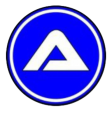Metal Profile Manufacturers in Iran
By: رضا حبیبی زاده، مدیر شرکت AZIN ASIA
By: Reza Habibizadeh, Managing Director of AZIN ASIA
Introduction
The metal profile industry plays a pivotal role in Iran's industrial and construction sectors. The production and utilization of metal profiles have seen significant growth over the past decades, reflecting the country's commitment to infrastructural development and industrialization. This article delves into the landscape of metal profile manufacturing in Iran, exploring its history, current state, challenges, and future prospects.
Historical Background
The inception of the metal profile industry in Iran dates back to the mid-20th century, coinciding with the nation's broader industrialization efforts. Initially, the industry focused on meeting domestic demands for construction materials, particularly in urban development projects. Over time, the sector expanded, incorporating advanced technologies and diversifying its product range to cater to various industries, including automotive, agriculture, and energy.
Current Landscape
Today, the metal profile industry in Iran encompasses a wide array of products, including but not limited to:
Structural Profiles: Used extensively in building frameworks, bridges, and other infrastructural projects.
Industrial Profiles: Tailored for machinery, equipment, and specialized industrial applications.
Decorative Profiles: Employed in interior design and architectural elements.
The production capacity has increased substantially, with numerous manufacturing units operating across the country. These facilities utilize both hot-rolled and cold-rolled processes, ensuring a diverse product range to meet varying market needs.
Technological Advancements
The integration of modern technologies has been instrumental in enhancing the quality and efficiency of metal profile production in Iran. Computer-aided design (CAD) and computer-aided manufacturing (CAM) systems have streamlined the design and production processes. Additionally, the adoption of automated machinery and quality control systems has ensured consistency and adherence to international standards.
Market Dynamics
The demand for metal profiles in Iran is influenced by several factors:
Construction Boom: Rapid urbanization and infrastructural projects have led to increased consumption of metal profiles.
Industrial Growth: Expansion in sectors like automotive, oil and gas, and agriculture has further propelled demand.
Export Opportunities: Iran's strategic location offers access to neighboring markets, presenting opportunities for export-oriented growth.
Despite these positive trends, the industry faces challenges such as fluctuating raw material prices, economic sanctions, and competition from imported products.
Challenges and Constraints
Several obstacles hinder the optimal growth of the metal profile industry in Iran:
Raw Material Dependency: Reliance on imported raw materials exposes manufacturers to global market volatilities.
Economic Sanctions: Restrictions have limited access to advanced technologies and international markets.
Infrastructure Limitations: Inadequate transportation and logistics infrastructure can impede efficient distribution.
Addressing these challenges requires concerted efforts from both the public and private sectors, focusing on resource diversification, technological self-reliance, and infrastructural development.
Future Prospects
The outlook for the metal profile industry in Iran remains promising. Key areas of focus for sustained growth include:
Innovation: Investing in research and development to create high-performance and specialized profiles.
Sustainability: Emphasizing eco-friendly production methods and recycling initiatives.
Market Expansion: Exploring new markets and strengthening export capabilities.
By leveraging its skilled workforce, strategic location, and industrial base, Iran can position itself as a regional hub for metal profile manufacturing.
Conclusion
The metal profile industry in Iran has undergone significant transformation, evolving from a nascent sector to a vital component of the nation's industrial fabric. While challenges persist, the industry's resilience and adaptability bode well for its future trajectory. Continued investment in technology, infrastructure, and human capital will be crucial in unlocking the full potential of metal profile manufacturing in Iran.
رضا حبیبی زاده، مدیر شرکت AZIN ASIA
Reza Habibizadeh, Managing Director of AZIN ASIA
https://www.linkedin.com/pulse/metal-profile-manufacturers-iran-reza-habibi-zadeh-fljdf




